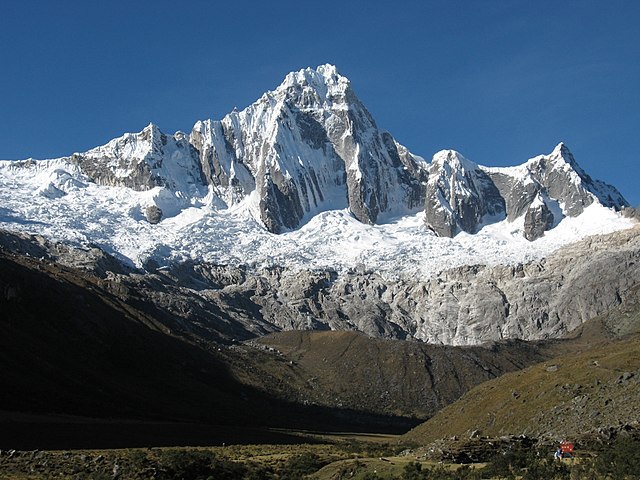Huascarán National Park is a Peruvian national park that comprises most of the mountain range known as Cordillera Blanca which is part of the central Andes, in the region of Ancash. The park covers an area of 340,000 hectares and is managed by the Peruvian Network of Protected Natural Areas, or SERNANP. It was designated as a World Heritage Site in 1985 by UNESCO, is also a well-known mountaineering spot, and harbors a unique biodiversity with plant species such as the Queen of the Andes, trees of the genera Polylepis and Buddleja, and animals such as spectacled bears, condors, vicunas, and tarucas.
Mount Huascarán, landmark and namesake of Huascarán National Park
One of the Llanganuco Lakes, inside the park.
Huandoy, one of the most popular mountains inside the park.
Queen of the Andes (Puya raimondii) growing inside the park.
The Cordillera Blanca is a mountain range in Peru that is part of the larger Andes range and extends for 200 kilometres (124 mi) between 8°08' and 9°58'S and 77°00' and 77°52'W, in a northwesterly direction. It includes several peaks over 6,000 metres (19,690 ft) high and 722 individual glaciers. The highest mountain in Peru, Huascarán, at 6,768 metres (22,205 ft) high, is located there.
Huandoy (6,360 m)
One of the Llanganuco Lakes, with snow-covered Yanapaccha in the background.
From left to right: Huandoy, Huascarán (highest mountain in the range) and Chopicalqui.
Taulliraju (5830 m)








